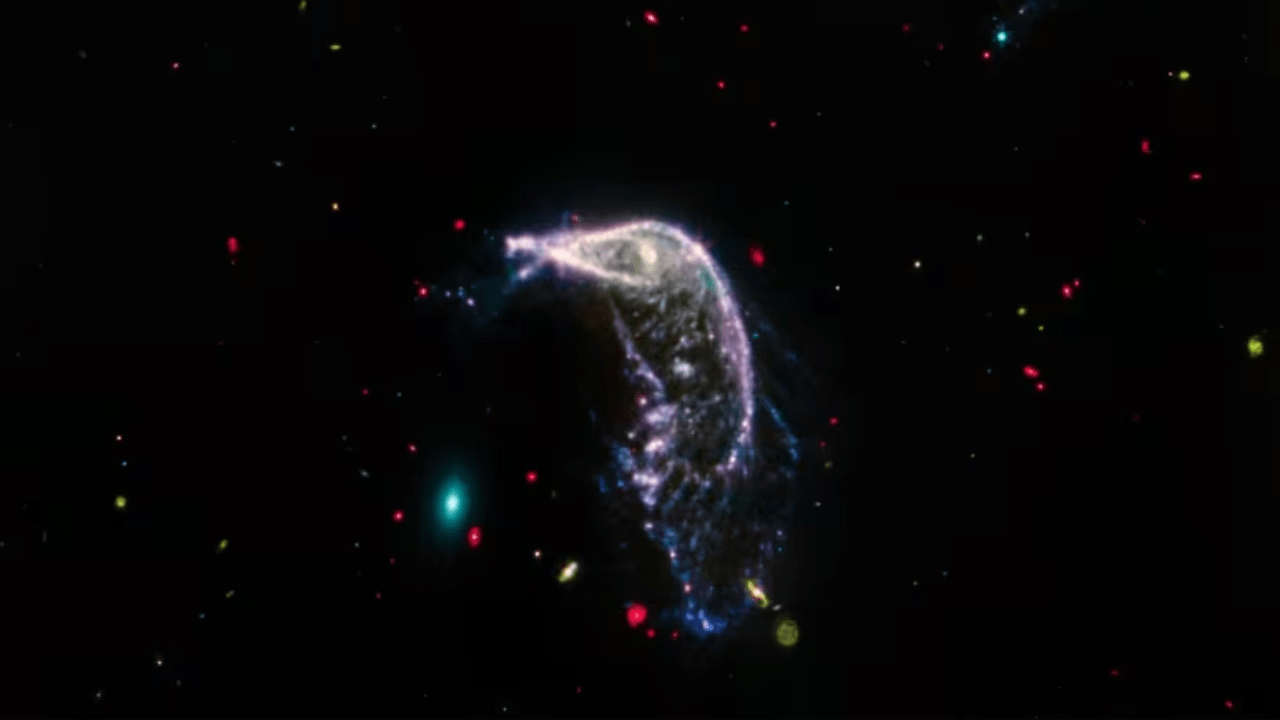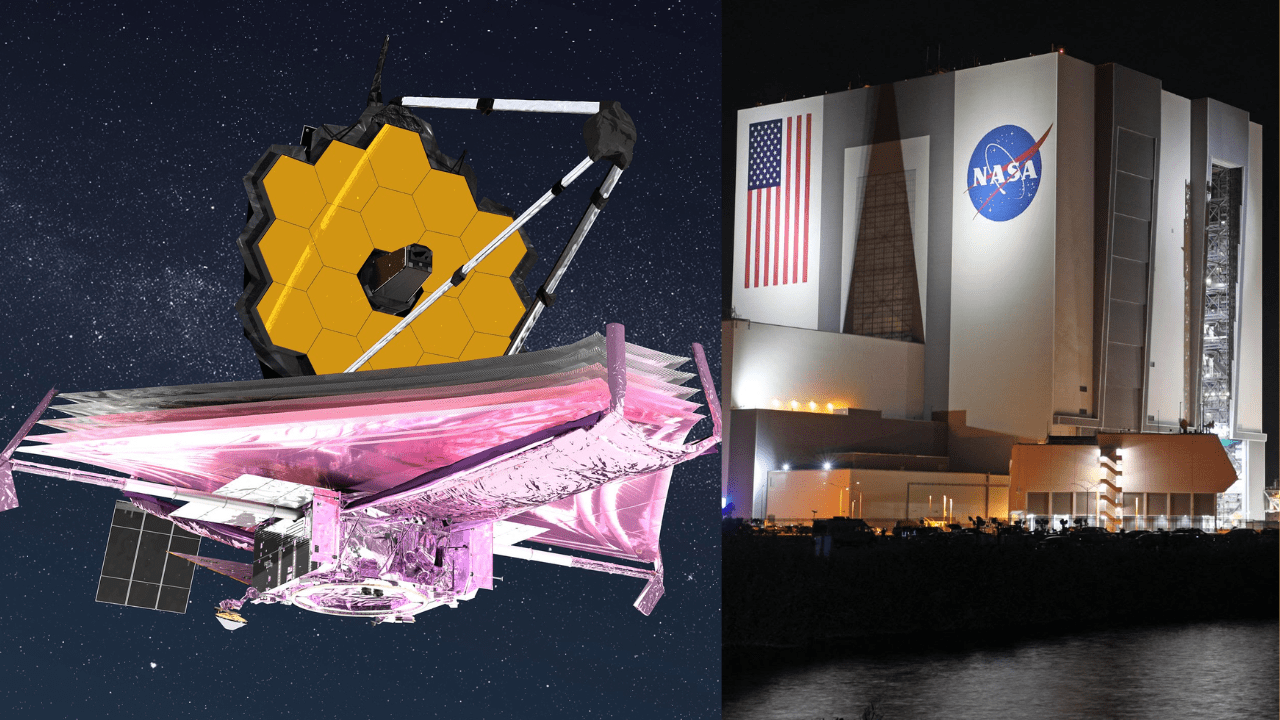Celebrating Webb Telescope’s Achievements as New James Webb Telescope Image Reveals ‘Penguin and Egg’ Galaxies in Infrared Glory

NASA’s James Webb Space Telescope has once again mesmerized the world with a stunning new image, capturing a pair of interacting galaxies nicknamed “the Penguin and the Egg.” This release coincides with the second anniversary of Webb’s scientific operations, showcasing its extraordinary capability to reveal the universe’s hidden wonders in infrared light. In this blog post, we’ll delve into the details of this cosmic dance, the significance of the Webb Telescope’s achievements, and what these observations mean for our understanding of the universe.
The Cosmic Dance of the Penguin and the Egg
To commemorate the second anniversary of the James Webb Space Telescope on July 12, NASA unveiled a spectacular view of the interacting galaxy pair known as Arp 142. This breathtaking image combines observations in both near- and mid-infrared light, captured by Webb’s NIRCam (Near-Infrared Camera) and MIRI (Mid-Infrared Instrument). The result is a vivid representation of the Penguin (NGC 2936) and the Egg (NGC 2937) galaxies locked in a cosmic embrace.
The Penguin galaxy, once a typical spiral galaxy, now displays a unique structure resembling a penguin, with its galactic center forming an eye and its arms shaped like a beak, head, backbone, and a fanned-out tail. Rich in gas and dust, the Penguin is actively forming new stars, a process catalyzed by its interaction with the Egg galaxy. In contrast, the Egg galaxy retains its small elliptical shape, largely unaffected due to its comparable mass to the Penguin.
A Closer Look at Webb’s Observations
The newly released image highlights the intricate details of this galactic interaction. The mingling of stars and gas is visible as a blue haze, a testament to the incredible sensitivity of Webb’s infrared instruments. These observations not only provide a stunning visual but also offer valuable scientific data on how such interactions trigger star formation.
The story of the Penguin and the Egg began between 25 and 75 million years ago. Since then, their gravitational dance has caused spectacular “fireworks” of new star formation within the Penguin galaxy. Despite their ongoing interaction, the galaxies have not merged, largely due to their similar masses, which has allowed them to remain distinct entities. This ongoing dance is expected to continue for another 4 billion years before a complete merger might occur.
The Journey of the James Webb Telescope
Launched on December 25, 2021, the James Webb Space Telescope represents a significant leap in our ability to explore the universe. Officially beginning scientific observations on July 12, 2022, Webb has since transformed our understanding of the cosmos. Its advanced infrared capabilities allow it to peer through cosmic dust and reveal galaxies, stars, and planetary systems that were previously hidden from view.

NASA Administrator Bill Nelson remarked on the telescope’s achievements, stating, “Since President Biden and Vice President Harris unveiled the first image from the James Webb Space Telescope two years ago, Webb has continued to unlock the mysteries of the universe.” This sentiment was echoed by Mark Clampin, director of the Astrophysics Division at NASA Headquarters, who highlighted the transformative impact of Webb’s observations on our understanding of the universe.
Significance of the Penguin and the Egg Observations
The interaction between the Penguin and the Egg galaxies provides a rich field of study for astronomers. Such interactions are relatively common in the universe and play a crucial role in galactic evolution. By observing these interactions in detail, scientists can gain insights into the processes that drive star formation, the behavior of galactic structures under gravitational influence, and the eventual outcomes of such cosmic dances.
Webb’s observations have already surpassed those of previous telescopes, capturing more distant, vivid, and dustier galaxies. This has expanded our knowledge of the early universe and the complex processes that have shaped it. The Penguin and the Egg galaxies serve as a microcosm of these larger cosmic interactions, offering a closer look at the mechanisms that govern galactic behavior.
Future Prospects and Webb’s Continued Legacy
The James Webb Space Telescope’s success in capturing the Penguin and the Egg galaxies is just one of many milestones in its mission. As it continues to operate, Webb is expected to uncover even more about the universe’s deepest secrets. Its ability to observe in infrared light provides a unique advantage, allowing it to peer through dust clouds and study phenomena that are invisible to other telescopes.
Looking ahead, Webb’s observations will continue to shape our understanding of the universe. From studying the formation of stars and planets to exploring the atmospheres of exoplanets and the behavior of distant galaxies, Webb is poised to make groundbreaking discoveries that will influence astronomy for decades to come.
Conclusion
The James Webb Space Telescope’s capture of the ‘Penguin and the Egg’ galaxies marks a significant achievement in its two-year journey. This stunning image not only celebrates Webb’s anniversary but also underscores its unparalleled ability to reveal the universe’s hidden wonders. As we look forward to more discoveries from Webb, the insights gained from these observations will continue to deepen our understanding of the cosmos and inspire future generations of astronomers.
Also Read:

The Psychology of Love: Why Valentines Day Matters More Epic Than You Think
Discover the psychology of love and why Valentines Day is more important than you think. Learn how love impacts the brain, strengthens relationships, and boosts

Premier League Highlights: Arsenal Humiliate Man City 5-1, Spurs and Palace Secure Crucial Wins
Arsenal demolished Manchester City 5-1 in a statement premier league highlights win, reigniting their title hopes. Meanwhile, Crystal Palace stunned Man United 2-0, and Tottenham

How Budget 2025 Impacts the Indian Middle-Class: Major Tax Benefits and Glaring Omissions
Budget 2025 offers major tax relief to the middle class, including zero tax on incomes up to ₹12 lakh. However, it misses out on incentives

Degrees vs Employability: Why “Highly Qualified Degree Holders” Struggle to Find Jobs While “Less Qualified Individuals” Get Hired Faster!
Many highly qualified individuals struggle to secure jobs, while less qualified candidates get hired quickly. This Degrees vs Employability paradox is caused by employer preferences,

The Power of Mindset: Why Looking Poor Doesn’t Make You Poor, but Thinking Poor Does!
Discover why looking poor doesn’t define your wealth but thinking poor does. Learn the power of mindset and how a growth-oriented mindset can lead to

Overthinking: How It’s Damaging Today’s Youth – Causes and Cure in 2025
Understanding how overthinking is silently damaging today’s youth, from its causes rooted in societal pressure and social media to its long-term effects on mental health.
